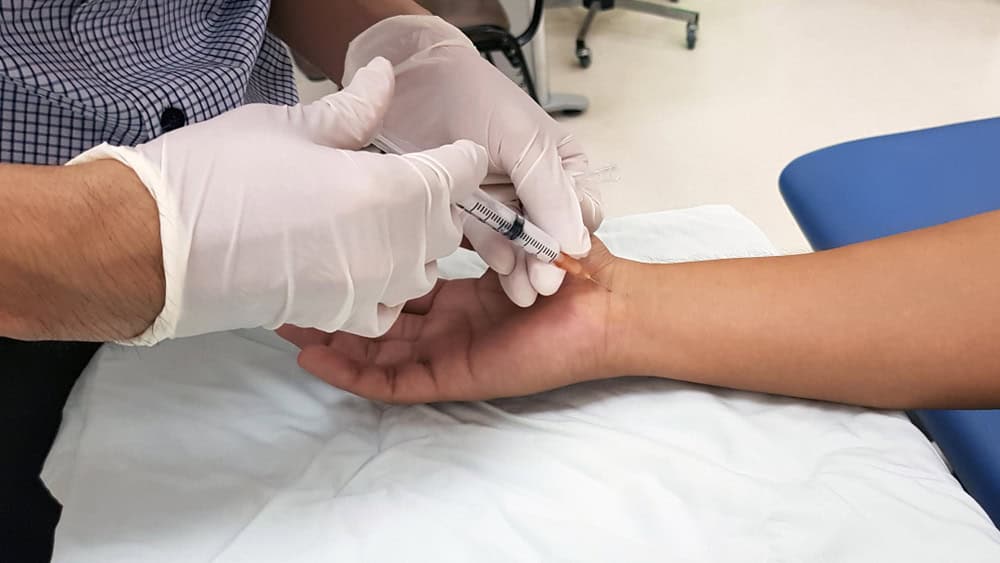Are you living with chronic nerve pain? Our neuropathy doctor in Windsor Terrace, NY offers treatments that help reduce pain and improve mobility. Get the relief you deserve with specialized care.

Reviews

At NY Spine Medicine, we specialize in neuropathy treatment for individuals who are suffering from chronic nerve pain and peripheral neuropathy in Brooklyn. Our neuropathy specialists use cutting-edge techniques to diagnose and manage nerve damage, improving the quality of life for our patients.
Advanced tools, like EMG tests and nerve conduction studies, allow us to create treatment plans that address nerve pain, numbness, and weakness. With options like physical therapy, nerve stimulation, and medication, we help patients regain comfort and mobility. Find lasting relief with our Windsor Terrace, NY neuropathy doctor today!


Ready to get started?
Nerve pain shouldn’t dictate your daily life. That’s why at NY Spine Medicine, our neuropathy doctor in Windsor Terrace, NY focuses on treatments designed to address chronic nerve pain and peripheral neuropathy at the source. We go beyond temporary relief, offering targeted therapies that promote long-term improvement.
From nerve damage treatment to innovative neuropathy therapies, we create custom strategies to restore function and reduce pain. Our goal is to help Brooklyn residents regain strength, mobility, and confidence in their daily routines. Start your journey toward lasting relief-schedule a consultation with our team today.

Before the coming of Europeans to the New World, the area which is now Windsor Terrace was inhabited by the Canarsee Indians. Specifically, the Gowanus and Werpos tribes inhabited the surrounding area. The land, which was then in the far northwestern corner of the Town of Flatbush, was purchased as a farm by John Vanderbilt. Some parts of the land were also maintained by the Martense family, who owned land in the area through 1895. This area was desirable due to its proximity to downtown Brooklyn, as well as the recent construction of the Coney Island Plank Road through the area and of the serene Green-Wood Cemetery to the southwest.
Following Vanderbilt’s death, his land was divided in two. Vanderbilt’s land were sold to William Bell, a real estate developer, in 1849. Bell subdivided the land into 47 building lots, and, unlike some other developers in the general area, was able to sell them rather quickly. Bell then renamed the area after one of the multiple places named Windsor in England. Bell sold part of the land to Edward Belknap in 1851, and Belknap subsequently built four streets on which he marked 49 lots for future “Pleasant Cottages.” The development was incorporated as the Village of Windsor Terrace, which was bounded by Church Avenue on the south, McDonald Avenue on the west, the Brooklyn-Flatbush town line on the north, and Prospect Park Southwest and Coney Island Avenue on the east. The Brooklyn Daily Eagle first referred to the area as “Windsor Terrace” in March 1854. By 1856, Belknap had lost his land due to foreclosure.
The area was generally desirable due to its prime location in the far northwest of the Town of Flatbush; close to the City of Brooklyn, yet located far enough outside it that residents of Windsor Terrace were willing to move there for its suburban ambience; and within walking distance of Brooklyn Rapid Transit’s streetcar lines. Additional blocks were developed in 1862, when the village had 30 inhabitants living in twelve houses. The village kept growing through the 1870s, boasting a Protestant chapel by 1874, a public school by 1876, and its own volunteer fire department by 1888. The village remained rural in feel until around 1900, when row houses began to be built throughout the area, at first along Prospect Park SW.
Learn more about Windsor Terrace.Local Resources
New York:
Florida:
Support